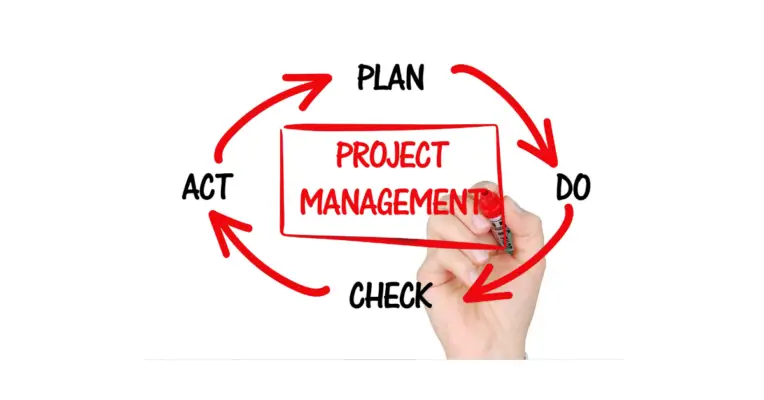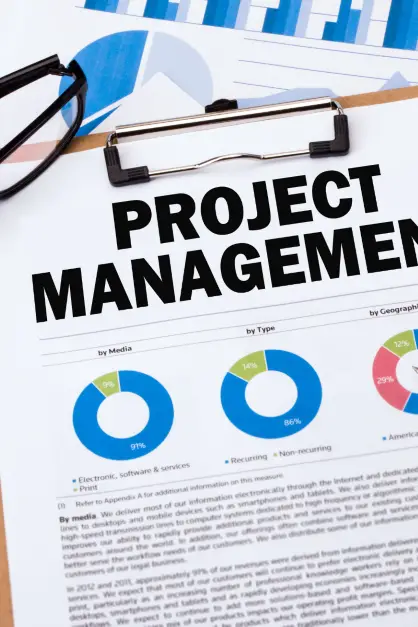The project risk management process typically includes four key steps: risk identification, risk analysis, risk mitigation, and risk monitoring.
Risk identification is the first and arguably most important step in effective risk management. During this step, project managers work with the project team and other stakeholders to identify potential risks that could impact the project. Once identified, risks can be prioritized based on their potential impact and likelihood of occurring.
Risk analysis is the second step in the risk management process and involves assessing the potential impact of each identified risk. This step helps project managers determine which risks are most likely to occur and which could impact the project most. Risks can be further analyzed to determine how they can be mitigated or controlled.
Risk mitigation is the third step in the process and involves taking action to reduce the likelihood of a risk occurring or minimize its potential impact. Common mitigate strategies include developing contingency plans, implementing controls, and insuring against losses.
The final step in the risk management process is risk monitoring. This step ensures that risks are monitored throughout the project’s duration and that any new risks that arise are promptly identified and addressed. Additionally, monitoring allows project managers to track the effectiveness of mitigation strategies and make necessary adjustments.
Project managers know that risk events can occur affecting project objectives. Positive risks can be opportunities to reduce project costs. Ultimately, issues will emerge that require the management of risks during the design phase. How can we solve our own problems? It sounds like a philosophical contradiction, but it’s possible to do some simple things to get things going.
As project development continues, organizations must be capable of managing uncertainties and associated risks. The growing need for project management reflects this trend — 22 million workers are expected by the end of 2027. In project managers, managing risks is a crucial skill that employers are looking for.
Project risk management is anticipating, recognizing, and responding to risks in a project. Effective project risk management can help ensure that projects are completed on time, within budget, and with desired results. Several steps can be taken to manage project risks effectively. This blog post will provide an overview of the key steps in the project risk management process.
What is Risk Management in Project Management?
In project management, the risk is anything positively or negatively affecting your project. Risk management involves identifying and managing such events before they happen. Risk comes in various forms, such as employees’ sickness, inclement weather, unplanned expenses, and delayed transportation.
All projects must have some risks. You cannot completely eliminate risk. Project Management is an important skill that project managers must possess to manage risk effectively. Risks usually affect one aspect of an enterprise’s work plan. Initial project risk assessment starts during the project planning stage.
What is Risk Management in Projects?
Project risk management is identifying and addressing the risks that arise in the project lifecycle to ensure that it stays on track and achieves its objectives.
It is no longer a reactive thing to manage risk as part of planning to determine what could potentially impact a project and how to mitigate it if it happens. The risks associated with a project can potentially affect the project’s schedule, performance, or budget.

Steps in the Risk Management Process
To protect a project from unexpected risks, a project manager typically adopts a continuous risk management strategy to identify, recognize and respond to risks/opportunities. Before starting this process, however, you should be familiar with your organization’s practices and how you’ll handle risks associated with the project.
Although risk management processes involve a clear process, this will most likely require continuous effort. Despite its inherent instability, the nature of risk must remain stable, and project managers must maintain flexibility.
Risk management processes and their lifecycles provide structured ways to manage risk. Although small variations may occur, risk management processes follow the below steps.
Identify the Risks
There’s no way to deal with risks that are not known. It can be tricky and difficult to determine if you’re in the right spot for a potential threat. When you complete these steps, you will want to keep the information in a risk register.
A possible way to think together. Find the people with relevant experiences and conduct interviews to get the data needed for identifying risks. Imagine what’s gonna happen. Notice it. Use similar history information from previous projects. Your list of possible risks grows. Take care that the risks are the root cause.
Analyze the Risk Analysis
Analyzing risks is tough. Obviously, much of this data can be complex, but the industry has good practices for risk analysis. Quantitative risk analysis is ideal for data. Depending on your company, you may find this step easier than you think. When assessing risk in the development process, you have several ways to mitigate risk.
Prioritize the Risks
No risk exists for everyone. Evaluating this risk and determining how to gather resources to resolve it is necessary. Having so many risk factors is daunting. It can be done by defining the risk in a specific order: high, medium, or low. Their horizon lines give us a sense of the risks in the situation’s context.
It helps us plan the way we will handle these risks in the first place. There may be risks that will require urgent attention. This is a risk that may cause you to delay. Failures can not be avoided. Some risks may not be a threat to your project. You may take the appropriate action.
Respond to the Risks
It’s gonna happen. I’m afraid it’s possible. All the planning goes into effect. The next thing you should do is to determine whether the risks are positive or negative. The risk management plan must be adopted if the scenario does not. Risk Management strategies are simply a plan that aims to minimize project risks. Those risks will be evaluated in the manner you prioritize them.
Assign an Owner to the Risk Management
Your hard work identifying and analyzing risks is useless if no one supervises them. Obviously, this should take place if you are evaluating risks. How should a person manage risk in an event? Some team members are more competent and/ or more knowledgeable about this problem. The risk owner should then be responsible for solving the problem. It is better to assign it to someone you trust, but it’s equally important to have someone responsible for all risks.
Monitor the risks
It is impossible to simply use force against risk without tracking its progress as a project progresses. Any person who controls the risk must follow its progress toward resolution.
Obviously, you must keep an updated view of all projects’ progress to identify potential hazards. You’re going to need to have several sessions on risk management.
Managing Risk with ProjectManager
A Risk Tracking Template can be an easy way to track risk in the project. However, it may be necessary if it can be used by someone with a project management software solution to manage the project’s risks. The project Manager software provides tools for managing risk during each project phase.

Create a project risk register
Create risk-registering software in the Excel spreadsheet. Describe risk record date, probability & impact on owners’ risk response actions and status. A way to track accurate information is essential to creating successful risk management structures.
Assign owners
Attribute ownership of project risk. Owners must be the best to deal with the most serious threat and watch them properly. Assign risk management with the involvement of your team. Collaborate on the most appropriate action needed and when.
How to Manage Project Risk?
Reduction
The risk reduction process requires modifying elements of your plan to limit the risk of happening. Medium and high risk is an attractive options to reduce. Reducing costs typically involves effort.
Project managers can also recruit new employees when they have fallen behind in their work. It can include risk-reducing techniques in your project plan. Time buffering is useful when you’re tasked with completing tasks that take longer or require longer than anticipated. A contingency budget is needed to cover unexpected expenses when they arise.
Transfer
Transferred risks involve transferring the risk to other parties outside of your projects. Then it may require obtaining insurance or outsourcing the work to another person. The risk will likely persist, but it will occur directly within the project.
Risk management is an essential element of a project management role since the risk is virtually inevitable. There is rarely a risk completely eliminated.
Accepted
Accepting risk is reasonable if it is unlikely and has no negative effect on your plan. In the end, a potential failure should not affect your project. For example, The florist could not have enough sunflowers and had to make another replacement with tulips. Since the chances for risk are small, tulips are more likely to have flowers in lieu of the sunflowers and will not disturb the marriage.
Tools for managing risk
Tools are useful to organize your team’s ideas and efforts while serving as a reference during a given project. Risk management plans are generally a living document containing all the information you need about the project’s risks.
It can contain a summary of the risk you are managing, the mitigation plan, and the risk ownership. Managers of projects can update documentation if the project’s development continues.
Identify risks
How do you know how risk can affect your future? This step identifies individual risks that can affect the project. Examples of common project risks include implementing new technologies for the project, having an unclear project objective or deliverable, and not having sufficient measures to protect project staff members. Use your own project management experience to see if there’s any potential challenge.
Analyze potential risk impact
The risk analysis stage examines the probability that the risk would happen and the possible impact each risk will have. You can start adding these risks to risk registers. The project risk register shows the risks and includes information about priority levels and mitigation plans. You can capture quantitative as well as qualitative data.
Assign priority to risks
This stage prioritizes risk by calculating the probability and impact of risk and determining their risk levels. It entitles each risk to high or low priority according to the parameters determined in the risk analysis. Evaluating a company’s risk allows the company to determine how it is focusing its efforts to manage the risks.
Monitor risks
Ensure you have a plan that monitors all risks during your project start. Ideally, you’ll assign a person to be a monitoring partner if you have specific problems or have to mitigate them in advance. This will give you an ongoing understanding of where there are risks in your situation.
Conclusion
The project risk management process is an important tool for ensuring the success of any project. By identifying potential risks and assessing their impact, project managers can take steps to mitigate those risks and ensure that the project stays on track.
However, as with any process, it is important to remember that risk management is not a one-time event but a continuous cycle. Risk identification, analysis, mitigation, and monitoring should all be made throughout the project’s life to keep risks under control. Have you used the project risk management process in your own projects? What tips would you share for others who are just starting out?

Chris Ekai is a Risk Management expert with over 10 years of experience in the field. He has a Master’s(MSc) degree in Risk Management from University of Portsmouth and is a CPA and Finance professional. He currently works as a Content Manager at Risk Publishing, writing about Enterprise Risk Management, Business Continuity Management and Project Management.

